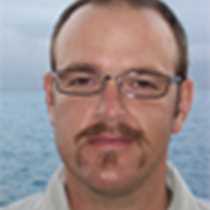Isabela Island
As the sun rose over a cloudy Alcedo volcano we began our day with an excitement and curiosity about what new surprises we would encounter. Large sea jellies and Pacific green sea turtles floated past us as we came upon our anchorage at Urbina Bay on the western coast of Isabela Island. Urbina Bay has a tumultuous past — over two square kilometers of shallow intertidal zone was uplifted in 1954, in certain areas more than four meters. We found remnants of the past in the form of large coral heads and mollusks that were trapped inland after the volcanic uplift. As we continued walking we found large land iguanas that were well camouflaged in the dense vegetation. A couple of large males showed their grandeur to us as they lazed close to our trail. The surrounding vegetation was interesting in that it has grown in salted soil after the 50’s. As we continued upon the trail we found that we were walking in the footsteps of Galápagos tortoises’ however the tortoise has hidden itself among the vegetation. Tortoises’ are prominent in this area, especially during the warm season which occurs during the first part of the year. Galápagos carpenter bees crossed our path as we returned to our landing beach to enjoy a swim in the colder waters of the western archipelago.
Navigation was spectacular as we entered the Bolivar channel, which separates Isabela and Fernandina Islands. This rugged coastline is incredibly new in geological terms, around 1 million years. Parasitic cones and basalt lava flows litter the scenery as we arrived at Tagus Cove, which has been a protected anchorage for centuries. Graffiti with its historic value is painted upon the surrounding cliffs, some dating back to the early 1800’s. Our afternoon started with kayaking along the inside coast which presents us with Galápagos penguins and flightless cormorants. Deep water snorkelers were treated to an abundance of turtles and an endemic Galápagos horn shark. The afternoon culminated with an invigorating hike above our anchorage to a view that is impossible to describe in so few words. We saw Darwin’s Lake, punctuated with Tagus Cove in the distance and a sunset that produced a glowing sky that warmed us all. As we return to our home, National Geographic Islander, we tried to understand all the marvels that we have lived during this single day in our lives.




